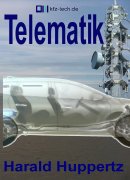
Bookstore
Exercises
Wheel change
Save Energy
History
Formulary

Ganz neu ...

Ganz neu ...
History (short)
History 1
History 2
History 3
History 4
History 5
History 6
History 7
History 8
koda
2015 Apprentices at koda
2015 Octavia RS 230
2015 Superb
2014 Fabia
2014 Simply Clever
2014 Yeti
2014 Octavia Combi
2013 Rapid Spaceback
2013 Octavia RS
2012 Citigo
2009 RS 2000
2009 Yeti
2008 Superb
2007 Fabia
2003 Fabia WRC
1999 Fabia
1996 Octavia
1994 Felicia
1987 Favorit
1987 Rapid
1977 130 RS
1974 200 RS Coupe
1972 Spider B5
1971 Super Sport Ferat
1964 1000 MB
1964 Formula 3
1959 Octavia
1957 1100 OHC
1956 1201 STW
1948 1101 Tudor Cabrio
1946 1101 Tudor
1935 935 Dynamic
|
  koda Superb koda Superb
|
|